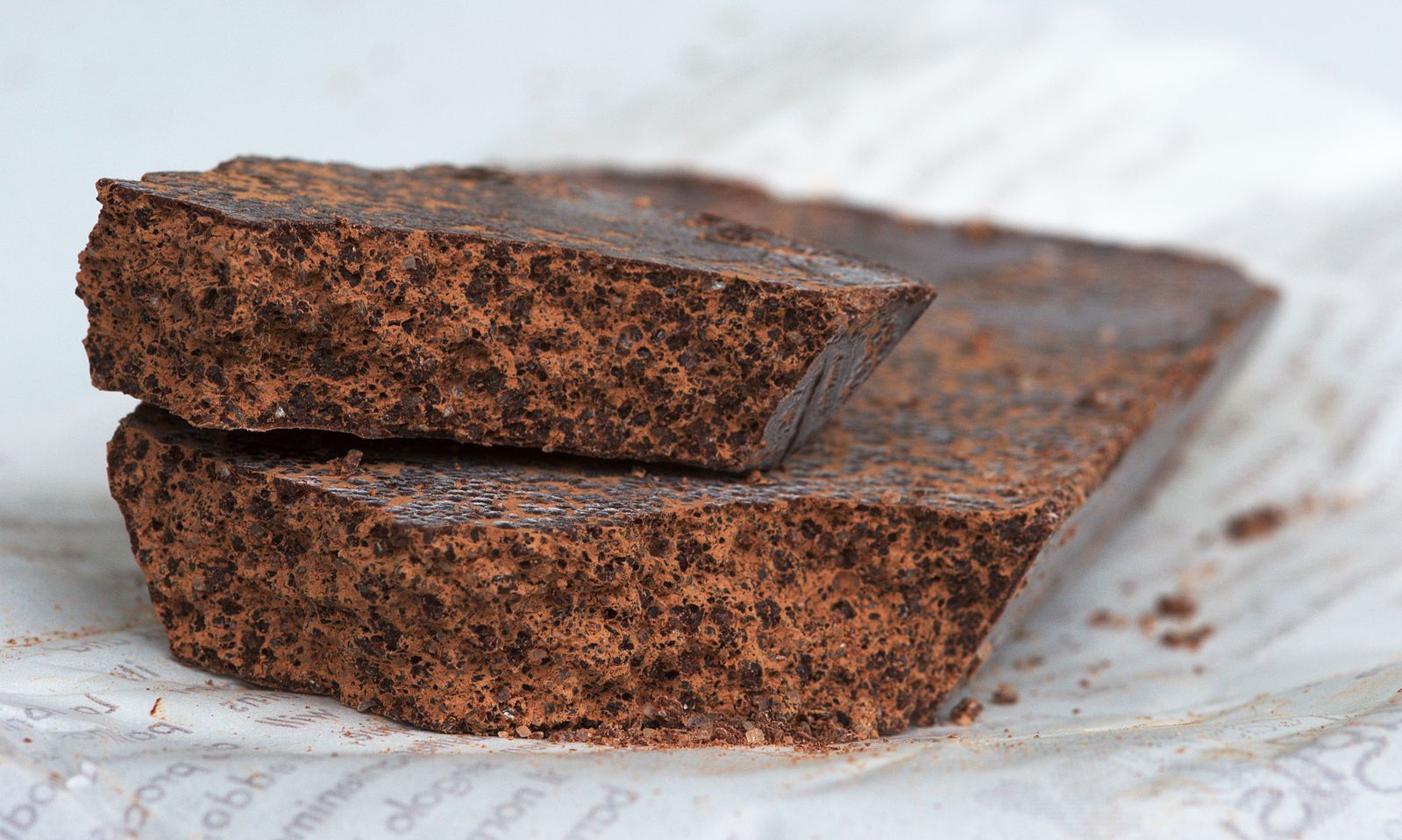The term chocolate, which comes via the Spanish from the Mayan xocolatlt and the Aztec cacahuatl, meaning “bitter water”, is similar in all the world’s nearly 300 languages.
School children everywhere learn that in October 1492 Columbus discovered America. Ten years later, during his fourth voyage–on the island of Guanaja, off the coast of Honduras, he and his crew were the first Europeans to taste chocolate. Columbus was sufficiently impressed to take some samples back to the court of Spain on August 15, 1502, where he also introduced gold, silver, tobacco, rubber, chewing gum, quinine and many other previously unknown foods: the potato, tomato, maize, avocados, pineapples, haricot, kidney and butter beans, lima beans, scarlet runners, French beans, peanuts, vanilla, red and green peppers, tapioca, and turkey.
Although many of Columbus’s new foods soon became popular, the tropical cacao tree, because of its beans’ bitterness, aroused little enthusiasm. This changed when Cortés returned home from Mexico in 1528 because, as part of his booty, the blood-thirsty conquistador brought back some Aztec recipes for making cacahuatl. Before betraying Montezuma who mistook him for the “returning Quetzalcoatl” or feathered serpent god, Cortés had tasted this drink during a sumptuous banquet offered in his honor.

The first written sources about cacahuatl are Historia del Mondo Nuovo, published by a Milanese merchant in 1565 and the diaries, Ragionamenti [1594-1606], of a Florentine merchant, Francesco Carletti, (1573-1636), perhaps the first non-Spanish cocoa bean importer. They both explain how the Aztecs shook chocolate paste, spices, and water in a gourd until they frothed and then with great pleasure, gulped down the energy-providing non-alcoholic drink in one swallow.
A few years later, in 1631, Antonio Colmenero recounts the first Spanish recipe for preparing a pot of chocolate: cocoa beans are mixed with varying dosages of either chili and Mexican pepper or aniseed, rose pod powder, cinnamon, almonds and hazelnuts, and sugar. For it hadn’t been long before the Spanish settlers in the New World informed their fellow countrymen that bitter cacahuatl was truly sublime if sweetened and served hot.
Thus, for almost 300 years after its introduction into Europe, chocolate was only consumed as a drink. It wasn’t until the nineteenth century, in 1819 to be exact, that François-Louis Callier, a Swiss apprentice who learned his trade from artisans named Caffarel in Turin, Italy, returned home to Vevey, Switzerland, and opened the world’s first factory to mass-produce chocolate in block form for eating. The Swiss, with Nestlé, Tobler, Suchard and Lindt, are still the leading manufacturers of chocolates, followed by the Dutch with Droste, the British with Cadbury’s (the company which created the first chocolate Easter egg in 1875, whereas today over 80,000,000 chocalate are made worldwide), the USA with Hershey, the Italians with Ferrero, Venchi, Perugina, and Caffarel (even if the latter merged with Lindt&Sprungl in 1998), and the more-recently-arrived Belgians with Godiva and Guylian.

Well-known chocoholics of the past include Brillat-Savarin, Casanova, Thomas Jefferson, Marie Antoinette, Voltaire, Goethe, Napoleon, Thomas Mann, and Hitler. Today the most avid consumers of chocolate candies are the Swiss with 22 pounds per capita annually, followed by the Austrians, Dutch and Norwegians with 18, the Swedes, Belgians, British, Irish, Germans with 15, the French and the Finns with 11, the Americans with 10, and the Italians and Spaniards with 4.
The king of chocolates made-in-Italy is Peyrano since 1915 at Corso Moncalieri 47 in Turin, the capital of Italian chocolates since the end of 17th-century. Here you can order chocolates in any shape you wish, but the “bicierin”, a honey-based hazel-nut chocolate spread is sublime. Downtown in Piazza Castello since 1873 is Caffé Baratti e Milano and outside the city, in Luserna San Giovanni, Caffarel, since 1865 is especially famous for its hazelnut gianduiotti. Today it’s Italy’s largest candy manufacturer with 400 different products and its own stores throughout Italy.
Founded in 1796, Casa Dolciaria Giuseppe Majani in Via Carbonesi 5, Bologna, is the oldest chocolate firm in Italy, still making all its exquisite products by hand according to 1832 recipes. Other memorables are Rivoire, in Piazza della Signoria in Florence, for its hot chocolate and its magnificent view; Slitti in Monsummano Terme near Pistoia for its whimsical shapes; Moriondo e Gariglio, Via Pié di Marmo 21/22, Said, Via Tiburtina 135, and Confetteria, Via Lucrezio Caro 24/28, all Rome’s century-old treasures; Gay-Odin, Via Vico Vetriera 12, founded by Isidoro Odin, a Piemontese, almost a century ago, in Naples; and Antica Dolceria Bonajuto, Corso Umberto I 159 in Modica, the oldest chocate-maker in Sicily, especially famous for its fondente.












